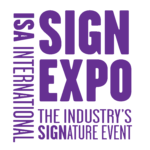Federal Highway Administration Research Says Digital Signs Don’t Distract Drivers
The Federal Highway Administration (FHWA) recently released the results of research on the impact of digital signs on traffic safety. The results will directly impact the sign industry. Digital signs don’t make drivers look away so that they are dangerously distracted. So says the main finding of the FHWA research. This result confirms other FHWA research done on digital signs in 1980 and 2001 as well as research by Texas A&M University and Virginia Tech University. Despite the abundance of such research, local sign code officials continue to cite traffic safety concerns as justification for restricting or even banning the use of digital signs, especially Electronic Message Centers (EMCs).
The FHWA project used human factors research, as compared to a statistical analysis as explained in “Finding Common Ground” page 12. The FHWA research was reportedly completed in 2010 but its release was mysteriously delayed. ISA tracked this research and protected the sign industry’s interests since it began in 2009, by voicing sign industry concerns to U.S. Department of Transportation officials, participating in traffic safety conferences by the National Alliance of Highway Beautification Agencies (NAHBA) and the Transportation Research Board (TRB), educating members of Congress about this federal issue and communicating the latest developments to our members. Also during this time frame, research promoting EMC nighttime brightness recommendations was released by ISA to help government officials reasonably regulate digital signs.
ISA commends the FHWA for completing and releasing this comprehensive research and will be working to inform local sign code officials across the country that the federal government has found the responsible use of digital signs to be safe and effective. ISA will also be participating in the annual meeting of the Transportation Research Board on January 13-16, where the recent research results will be discussed and debated among traffic engineers, academics, government officials and the sign industry. For more information, contact ISA’s David Hickey.
The FHWA project used human factors research, as compared to a statistical analysis as explained in “Finding Common Ground” page 12. The FHWA research was reportedly completed in 2010 but its release was mysteriously delayed. ISA tracked this research and protected the sign industry’s interests since it began in 2009, by voicing sign industry concerns to U.S. Department of Transportation officials, participating in traffic safety conferences by the National Alliance of Highway Beautification Agencies (NAHBA) and the Transportation Research Board (TRB), educating members of Congress about this federal issue and communicating the latest developments to our members. Also during this time frame, research promoting EMC nighttime brightness recommendations was released by ISA to help government officials reasonably regulate digital signs.
ISA commends the FHWA for completing and releasing this comprehensive research and will be working to inform local sign code officials across the country that the federal government has found the responsible use of digital signs to be safe and effective. ISA will also be participating in the annual meeting of the Transportation Research Board on January 13-16, where the recent research results will be discussed and debated among traffic engineers, academics, government officials and the sign industry. For more information, contact ISA’s David Hickey.






